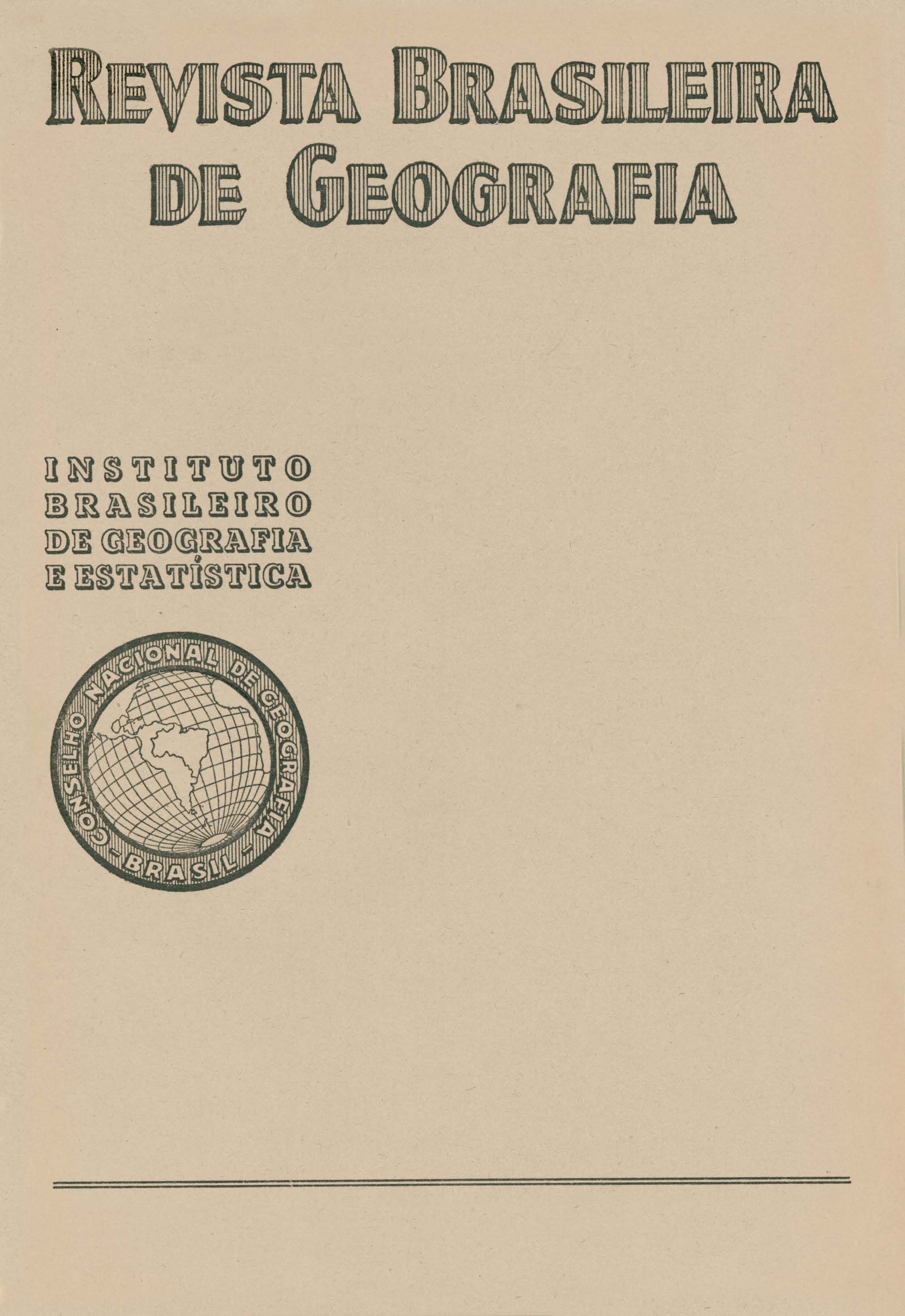Notas para o estudo do clima do Centro-Oeste brasileiro
Palavras-chave:
Brasil - Centro Oeste, Geografia Física, ClimatologiaResumo
The author begins by commenting, in a general way, the Centro-Oeste region of Brazil, emphasizing its size and the deficiency of its meteorological stations, from which informations one must base a study on the climate.
The author delimitated an area within the Grande Região Natural Centro-Oeste, bearing in mind the location of the meteorological stations together with the information provided by these stations selected bibliography was consulted so that an honest description of the climate of this region could be given.
In the first part The principal meteorological elements are examined. The analysis of the temperature shows that its distribution is intimately connected to the relief of the region. The pressures and winds are examined in a study of the general circulation of air masses on the south-american continent, as well as their influence on the region under consideration. From The study of the pluviosity one observes that the amount of rainfall in the region is related, also, to the relief; the distribution of rainfall during the year leads to one of the principal characteristics of the region, that is, the incidence of two distinct seasons during a year: a dry-season (winter, spring) and a rainy-season (summer, autumn). Due to its geographic interest the author examined, also, the annual member of rainy days and the number of rainy days during the three drier months, because of the importance these observations may have to the agricultural activities of the region. The humidity was regarded as the result of the relation between temperature and rainfall. From the study of the humidity one finds that the region is under moderate humidity, not having the high humidity of the littoral or the excessive humidity of the Amazônia.
The author classifies, then, the "climatic types" adopting the system of Koppen which is internationally recognized.
The climates found in the region are of the Aw and Cw types according to the classification of Koppen.
The first type, denominated "tropical savanas" is related, within the region, to the smaller altitudes, being noted on the Baixada Paraguaia (Paraguayan Lowland) on the slope of the plateau and in the less elevated parts of the last.
Together with the predominance of the tropical climate Aw, when there is an increase in altitude, the Cw type humid mesotermic climate appears, with a hot summer (Cwa) and even with a mild summer (Cwb).
On the third part, the author discusses the relations between the climatic aspects and the natural as well as cultural conditions of the region under consideration. He proceeds to this discussion according to the different phisiographic units of the region, as follows:
- a) an extense and complex plateau which covers about 90% of the total area of the region and which altitude varies from 300 to 1. 500 m.
- b) the western slope of this plateau which sometimes appear as an abrupt escarpment or as a gentle slope.
- c) the Baixada Paraguaia, which covers the vast plain on the north and which is delimited to the east by the slope of the plateau and which spreads for about 12% of the State of Mato Grosso or 8% of the total area of the region.
Though the climatic types are not radically different in each of these parts, one can observe that, in conjunct, the climatic types are related to the physiography of the region.
In this part the author discusses, also, the influence of the climatic aspects on the vegetal covering and on the human activities.
Finally, The author concludes:
In the Centro-Oeste region of Brazil the Aw type tropical climate predominates; on the higher altitudes (between 700 and 1.500 m) the humid mesotermic climate predominates. However, this mesotermic type differs from The other in what concerns to temperature for the other tropical characteristics still remain.
The climate of the region presents a moderate humidity, this fact influencing the "temperatura sensível" (sensitive temperature) and the salubrity of the region.
In what concerns to its continental character, though not deniable, it does not attain the intensity of a characteristic due to the elongated form of the South American continent.
The existence of two seasons dry and rainy well distinguished and regular during the year, besides being one of the most important climatic characteristics of the region and together with the moderate humidity determines a vegetal covering which tends to xerophilism.
Within this extense and varied region the climate is intensely related to the physiography. Contrasting with the variety it presents on the plateau as well as on its slope, the climate maintains itself uniformly on the Baixada Paraguaia where it influences the natural and human conditions of the geographical landscape.






